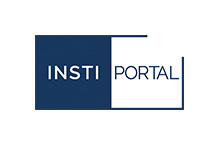InstiReport
The institutional investor landscape in Germany is intransparent and highly fragmented. Well over 500 investors manage more than four trillion euros. In the last five years, the investment volume has increased by more than half a trillion euros, with pension funds for liberal professions, health insurance companies and municipal / church pension funds growing particularly dynamically.
Asset allocation is undergoing a continuous transition process in the low-interest environment. Over the past five years, for example, the share of direct bond investments in total investments has been reduced by around one-fifth in the case of insurance companies, by around one-quarter in the case of company pension funds, and by almost half in the case of pension funds for liberal professions. Indirect (fund) investments thus increased by more than 500 billion euros. In addition, asset allocation differs significantly between and within investor groups.
In spring 2014, GAC started to systematically study institutional investor groups. The interest and positive feedback from asset managers, consultants, fund companies, investors and the press on initial publications on company pension funds and pension funds for liberal professions has confirmed our decision to expand the focus to other investor groups such as corporates, insurance companies, Depot A, foundations and municipal / church pension funds. This InstiReport is intended to provide a systematic overview of structure, trends, asset allocation and benchmarks across all investor groups with a capital volume of more than four trillion euros.
The InstiReport is only available in German so far.
Auszüge aus dem InstiReport 2022 (beispielhaft):
Mehr als 700 Kapitalsammelstellen mit einem Anlagevolumen von mindestens 500 Millionen Euro verwalten insgesamt mehr als vier Billionen Euro. Das Gesamtvolumen wächst jährlich um mehr als 100 Milliarden Euro. Besonders dynamisch sind in den letzten Jahren Versorgungswerke, kommunale und kirchliche Zusatzversorgungskassen und Krankenversicherungen sowie die fondsgebundene Lebensversicherung gewachsen.
Die Asset Allocation differiert zwischen und innerhalb der Investorengruppen erheblich. So fahren Lebensversicherer durchschnittlich eine Aktienquote von 6% und eine Immobilienquote von 7%, während Corporates Aktien mit 24% und Versorgungswerke Immobilien mit mehr als 20% gewichten. Innerhalb der Lebensversicherer finden sich wiederum Aktienquoten von Null oder 15%, bei Versorgungswerken Immobilienquoten von 5 oder über 30%.
Im Niedrigzinsumfeld haben nahezu alle Investoren die Rentendirektanlage massiv abgebaut, allerdings mit unterschiedlichem Tempo. So macht sie bei Lebensversicherern noch knapp die Hälfte, bei Versorgungswerke nur noch rund ein Fünftel der Gesamtanlagen aus. Erheblich ausgebaut wurden in den letzten Jahren Immobilieninvestments sowie Investitionen in Alternatives (vor allem Private Equity, Infrastruktur und Private Debt).
Aufgrund der unterschiedlichen Vermögensallokation differiert auch die Performance zwischen und innerhalb der Investorengruppen deutlich. Während in den Jahren stark sinkender Zinsen Investoren vor allem von hohen Anleihenbeständen mit langer Duration profitieren konnten, macht sich im Niedrigzinsumfeld eine breite Allokation vor allem auch in Realwerte bezahlt.
Bitte finden Sie rechts zu Ihrer Information einen InstiReport Inhaltsüberblick, einen Two Pager, das Bestellformular sowie einige Veröffentlichungen der GAC in der Fachpresse!
Mit dem beiliegenden Bestellformular können Sie den InstiReport für Ihre eigenen Zwecke erwerben (bitte gescannt an info@gacgmbh.de senden).
Der InstiReport 2022 ist voraussichtlich ab September / Oktober 2022 verfügbar.

